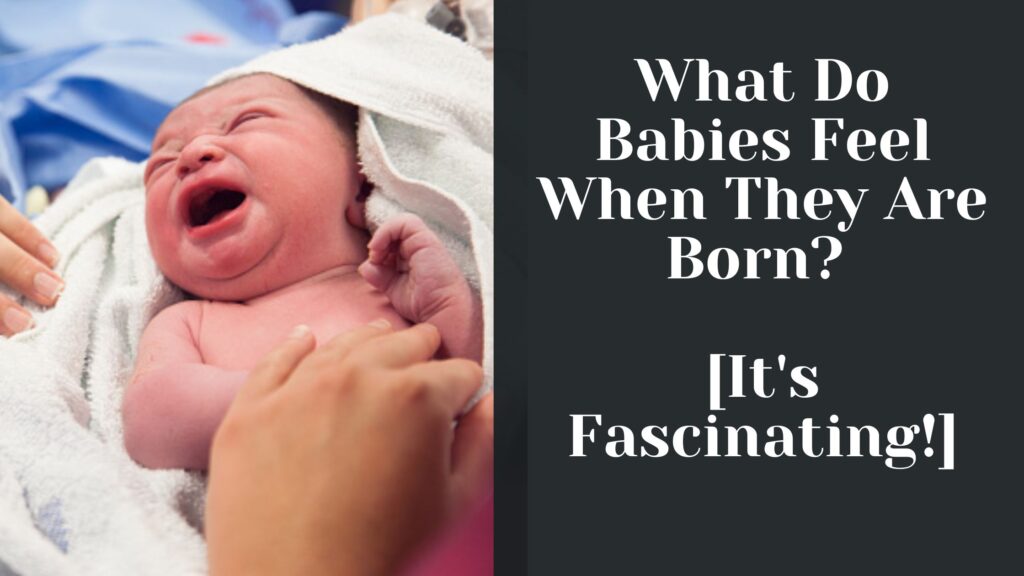Did you know that by 2032, sales of baby monitors are estimated to reach $1,264 million in the United States?
As much as we would love to keep an eye on our baby at all times, having a baby monitor at home is always handy because it allows you to hear your baby’s cries and movements even when you are not in the same room.
But as your baby grows, you’ll need to consider when it’s time to stop using the monitor.
In this blog post, we’ll explore:
- Things to consider when deciding when to stop using a baby monitor
- Safety concerns to keep in mind
- Tips for transitioning away from the monitor with step by step advice
When to Stop Using Baby Monitor: 3 Factors To Consider
When deciding when to stop using a baby monitor, there are several factors to consider:
1. Age and Development of Your Baby
As your little one gains mobility, they won’t be confined to a crib or playpen all day.
They may begin to crawl or walk, which allows them to explore their surroundings more easily. This can make the use of a baby monitor less necessary.
According to the NHS, the average age for a baby to start crawling is 7 to 10 months.
By 18 months, your baby should start walking independently.
To make sure you’re aware of your baby’s developmental milestones:
- take note of your baby’s progress on a regular basis
- consult with your pediatrician if you have any concerns
2. Your Baby’s Safety
Another important aspect to consider is your comfort level and trust in your baby’s safety.
As your baby grows, you may start to feel more confident in your ability to care for them without the constant need of a baby monitor.
It’s a good idea to take some time to reflect on how you feel when you’re away from your baby and when you’re monitoring them.
Some parents may choose to stop using a baby monitor when their baby is a toddler, while others may continue to use it until their child is much older.
3. Privacy and Hacking Concerns
In 2018, a hacker broke into a Ring camera and talked to an 8 year old in her bedroom.
Some baby monitors come with camera features that allow parents to see their baby. However, this also means that someone else could potentially see them as well.
As with any device connected to the internet, baby monitors are vulnerable to hacking.
For this reason, you may either want to stop using the baby monitor (if you are ready to do so) or ensure you take steps to secure it.
Here are some steps to ensure your baby’s privacy:
- Make sure the monitor you’re using has secure encryption
- Limit the number of people who have access to the monitor
- Keep the monitor in a private area of the house
- Use a monitor with a secure connection (wired or secure wireless)
- Change the default password on the monitor
- Keep the software updated
- Be cautious of any suspicious activity on the monitor
Transitioning Away from the Baby Monitor
If you’ve decided it’s time to stop using your baby monitor, it’s important to do so gradually.
For example, you could start by not using the monitor during naps and then gradually increase the time to include nighttime.
Here are some steps to gradually transition away from the baby monitor:
- Start with shorter periods without the monitor
- Gradually increase the length of time
- Use alternative methods for checking on your baby
- Be patient and give yourself time to adjust
How to Know When It’s Time to Stop Using a Baby Monitor
When it comes down to it, knowing when it’s the right time to stop using a baby monitor is all about listening to your own gut.
If you find yourself constantly checking the monitor and feeling anxious or stressed, it might be time to take a step back.
Additionally, when your baby starts to reach milestones like crawling or walking, it could be a sign that it’s time to put the monitor away.
Here are some signs that it may be time to stop using the baby monitor:
- You find yourself constantly checking the monitor
- You feel anxious or stressed when you’re away from your baby
- Your baby has reached a developmental milestone (crawling or walking)
- You feel confident in your ability to care for your baby without the monitor
The Importance of Maintaining a Balance
While it’s important to keep your baby safe, you should never become too reliant on the baby monitor.
Continuously checking in on your baby through the monitor can cause stress and anxiety, so it’s essential to trust in your own parenting skills.
Striking a balance between keeping your baby safe and maintaining your own well-being is vital.
Here are some ways to maintain a balance:
- Set boundaries for yourself, such as not checking the monitor during certain times of the day
- Practice self-care to reduce stress and anxiety
- Trust in your own abilities as a parent
- Learn to recognize when you’re becoming too dependent on the monitor
Conclusion
In the end, it’s up to you to decide when the right time is to stop using a baby monitor 🙂
It’s important to think about your own comfort level, how much you trust your baby’s safety, and your baby’s development.
Gradually easing away from using the monitor and using other methods to check on your baby can make it an easier process.
Make sure to listen to your gut and find a balance between keeping your baby safe and keeping your own peace of mind!


